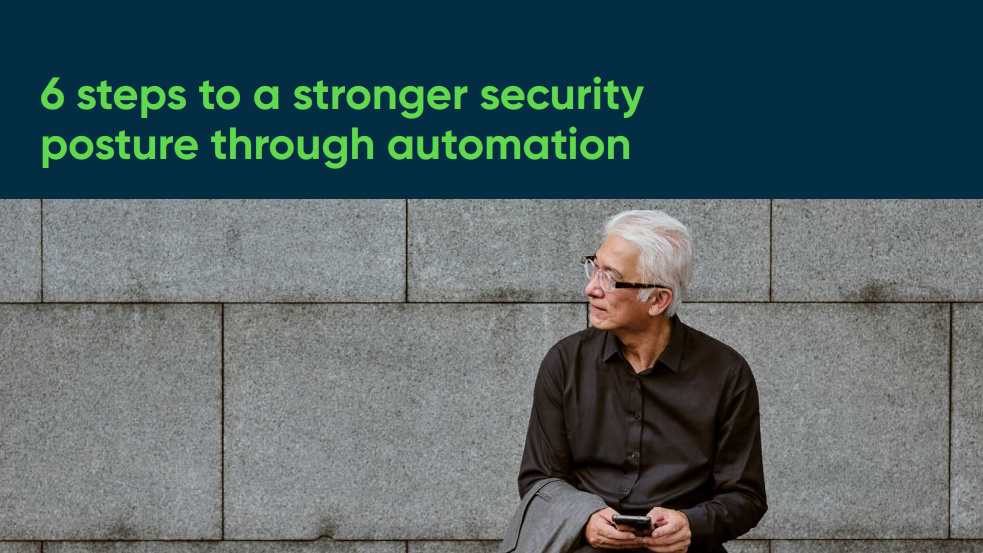Cryptojacking attacks surge 399% globally as threat actors diversify tactics
Attackers are switching tactics to wreak havoc and maximize financial gains


Security experts have issued a warning over a significant increase in cryptojacking attacks as threat actors seek to ‘diversify’ their tactics.
The volume of cryptojacking attacks surged by 788% in Europe during the first half of the year, with attacks in North America also rising by 345%.
Globally, the volume of cryptojacking attacks has increased by around 399%, according to research from SonicWall.
This increase marks the highest year-on-year record for global cryptojacking attacks, the firm said, and highlights a shift away from traditional ransomware attacks in favor of “stealthier means of malicious activities”.
“Cyber criminals are diversifying and expanding their skill sets to attack critical infrastructure, making the threat landscape even more complex and forcing organizations to reconsider their security needs,” the company said in a statement.
This rise comes amid a decline in global ransomware attempts, which have dropped by 41% since the beginning of the year. However, the research indicated an upward trend in other attack methods, such as IoT malware (+37%) and encrypted threats (+22%).
RELATED RESOURCE

Six steps to a stronger security posture through automation
Discover the tools to boost your cyber resilience.
Bobby Cornwell, vice president of product security at SonicWall, said the evolving tactics witnessed in recent months show a desire among threat actors to harness techniques that are low-cost, but often deliver high returns.
Get the ITPro daily newsletter
Sign up today and you will receive a free copy of our Future Focus 2025 report - the leading guidance on AI, cybersecurity and other IT challenges as per 700+ senior executives
“SonicWall intelligence suggests that bad actors are pivoting to lower-cost, less risky attack methods with potentially high returns, like cryptojacking,” he said.
“It also explains the reason we’re seeing higher levels of cyber crime in regions like Latin America and Asia. Hackers search for the weakest points of entry, with the lightest possible repercussions, limiting their risk and maximizing their potential profits.”
High-priority targets
Globally, SonicWall found that ransomware attacks on a host of industries saw a decline during the first half of the year, reflecting a broader dip in ransomware activity.
However, popular target sectors such as healthcare, government, and education all faced an increase in cryptojacking attacks.
Cryptojacking attempts against educational institutions surged by 320% while government-related attacks also increased by 89%.
“The seemingly endless digital assault on enterprises, governments, and global citizens is intensifying, and the threat landscape continues to expand,” said SonicWall president and CEO Bob VanKirk.
“Threat actors are relentless, and our data indicates they are more opportunistic than ever, targeting schools, state and local governments, and retail organizations at unprecedented rates.
What is cryptojacking?
Cryptojacking is a type of attack that harnesses a victim’s desktop or laptop device to mine cryptocurrency.
This form of attack has grown in popularity among threat actors alongside the rise of cryptocurrencies in recent years, and is typically initiated when a victim unwittingly installs malware on their device.
Phishing attacks are frequently leveraged to initiate this type of attack, prompting users to click on a malicious link in email correspondence, or even on a webpage.
Victims of cryptojacking often might not be aware they’ve even fallen prey to cyber criminals, enabling the attacker to fly under the radar and mine cryptocurrency for extended periods.
There are telltale signs, however. One of the main signs of cryptojacking is decreased device performance due to the increased use of processing power.
Similarly, for laptop devices, a rapidly decreasing battery capacity can also be a telltale sign that a user has been compromised and their device is being used to mine currencies.

Ross Kelly is ITPro's News & Analysis Editor, responsible for leading the brand's news output and in-depth reporting on the latest stories from across the business technology landscape. Ross was previously a Staff Writer, during which time he developed a keen interest in cyber security, business leadership, and emerging technologies.
He graduated from Edinburgh Napier University in 2016 with a BA (Hons) in Journalism, and joined ITPro in 2022 after four years working in technology conference research.
For news pitches, you can contact Ross at ross.kelly@futurenet.com, or on Twitter and LinkedIn.
-
 Bigger salaries, more burnout: Is the CISO role in crisis?
Bigger salaries, more burnout: Is the CISO role in crisis?In-depth CISOs are more stressed than ever before – but why is this and what can be done?
By Kate O'Flaherty Published
-
 Cheap cyber crime kits can be bought on the dark web for less than $25
Cheap cyber crime kits can be bought on the dark web for less than $25News Research from NordVPN shows phishing kits are now widely available on the dark web and via messaging apps like Telegram, and are often selling for less than $25.
By Emma Woollacott Published
-
 ‘Phishing kits are a force multiplier': Cheap cyber crime kits can be bought on the dark web for less than $25 – and experts warn it’s lowering the barrier of entry for amateur hackers
‘Phishing kits are a force multiplier': Cheap cyber crime kits can be bought on the dark web for less than $25 – and experts warn it’s lowering the barrier of entry for amateur hackersNews Research from NordVPN shows phishing kits are now widely available on the dark web and via messaging apps like Telegram, and are often selling for less than $25.
By Emma Woollacott Published
-
 Healthcare systems are rife with exploits — and ransomware gangs have noticed
Healthcare systems are rife with exploits — and ransomware gangs have noticedNews Nearly nine-in-ten healthcare organizations have medical devices that are vulnerable to exploits, and ransomware groups are taking notice.
By Nicole Kobie Published
-
 Alleged LockBit developer extradited to the US
Alleged LockBit developer extradited to the USNews A Russian-Israeli man has been extradited to the US amid accusations of being a key LockBit ransomware developer.
By Emma Woollacott Published
-
 February was the worst month on record for ransomware attacks – and one threat group had a field day
February was the worst month on record for ransomware attacks – and one threat group had a field dayNews February 2025 was the worst month on record for the number of ransomware attacks, according to new research from Bitdefender.
By Emma Woollacott Published
-
 CISA issues warning over Medusa ransomware after 300 victims from critical sectors impacted
CISA issues warning over Medusa ransomware after 300 victims from critical sectors impactedNews The Medusa ransomware as a Service operation compromised twice as many organizations at the start of 2025 compared to 2024
By Solomon Klappholz Published
-
 Warning issued over prolific 'Ghost' ransomware group
Warning issued over prolific 'Ghost' ransomware groupNews The Ghost ransomware group is known to act fast and exploit vulnerabilities in public-facing appliances
By Solomon Klappholz Published
-
 The Zservers takedown is another big win for law enforcement
The Zservers takedown is another big win for law enforcementNews LockBit has been dealt another blow by law enforcement after Dutch police took 127 of its servers offline
By Solomon Klappholz Published
-
 There’s a new ransomware player on the scene: the ‘BlackLock’ group has become one of the most prolific operators in the cyber crime industry – and researchers warn it’s only going to get worse for potential victims
There’s a new ransomware player on the scene: the ‘BlackLock’ group has become one of the most prolific operators in the cyber crime industry – and researchers warn it’s only going to get worse for potential victimsNews Security experts have warned the BlackLock group could become the most active ransomware operator in 2025
By Solomon Klappholz Published